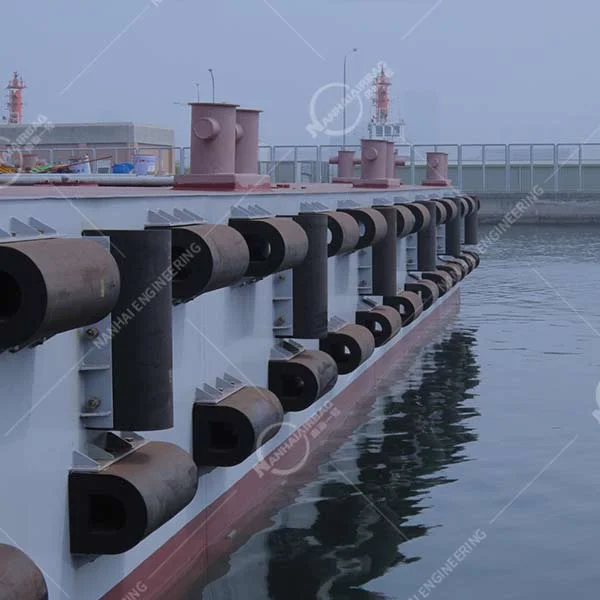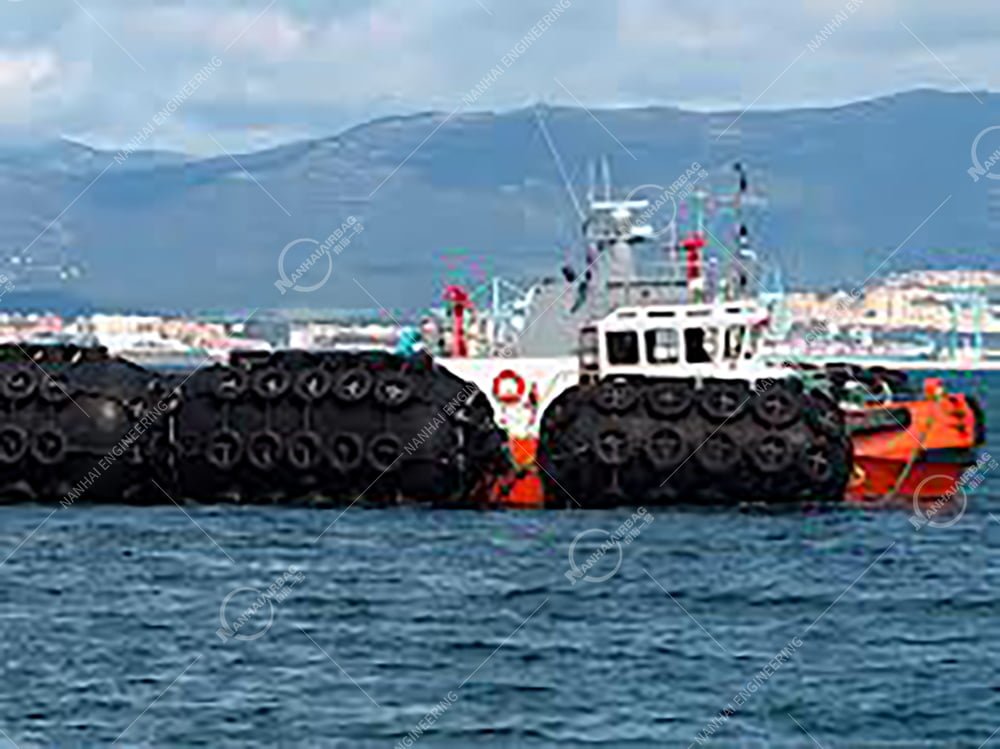Core Advantages of Pneumatic Fenders: Why They’re the Preferred Choice for Modern Ports
09/04/2025Intelligent monitoring system for inflatable fenders
24/04/2025


In the anti-collision systems of ports, docks and offshore platforms, fenders are key equipment to ensure the safety of ships and docks. As the shipping industry develops towards large-scale and intelligent development, fender technology is also constantly innovating. Inflatable fenders and solid fenders are two mainstream solutions, each with its own technical characteristics and application boundaries. This article conducts a comparative analysis from three dimensions: cost investment, protection efficiency and applicable scenarios, to provide decision-making references for port planners and ship engineers.
1、Cost comparison: initial investment and long-term economy
- Initial procurement and installation costs
Fixed fenders: mainly made of rubber, wood or steel structures, with mature production processes and low material costs. For example, the purchase price of ordinary rubber fenders is about 50%-70% of that of inflatable fenders. However, its installation requires heavy machinery fixation, especially in deep-water docks or complex terrain, and the construction cost increases significantly.
Inflatable fender: Made of high-strength rubber or composite materials, it needs to be equipped with air valves and pressure control systems inside, and the initial purchase cost is high (about 1.5-2 times that of fixed fenders). However, its modular design greatly simplifies the installation process, does not require complex anchoring structures, and can reduce labor and machinery costs by more than 30%.
- Maintenance and service life
Fixed fender: susceptible to seawater corrosion, ultraviolet aging and mechanical wear, with an average life of 8-12 years. Wooden fenders need to replace fillers regularly, and rubber fenders are difficult to repair after surface damage. The average annual maintenance cost accounts for about 5%-8% of the total investment.
Inflatable fender: The internal air pressure is adjustable, and the exterior is coated with corrosion-resistant coating, with a service life of up to 15-20 years. Daily maintenance is mainly based on air pressure monitoring and surface cleaning, and the average annual maintenance cost accounts for only 2%-3%. Even if it is partially damaged, it can be repaired by patching without overall replacement.
Conclusion:
Fixed fenders have lower short-term costs and are suitable for small docks with limited budgets; inflatable fenders have better life cycle costs and are suitable for large ports with high frequency of use.
2、Efficiency comparison: protection performance and operational flexibility
- Energy absorption rate and impact resistance
Fixed fenders: rely on the elasticity (such as rubber) or rigidity (such as steel) of the material itself to absorb impact force, and the energy absorption rate is generally 40%-60%. When ultra-large ships (such as 200,000-ton bulk carriers) are berthing, stress concentration may occur, causing fender cracking or damage to the dock structure.
Inflatable fenders: Disperse impact energy through gas compression, and the energy absorption rate can reach 70%-90%. For example, test data from Yokohama Port in Japan showed that when the inflatable fender is subjected to the same impact force, the residual stress on the dock structure is 45% lower than that of the fixed type. - Adaptability and intelligent potential
Fixed fenders: The shape and hardness are fixed and cannot be dynamically adjusted according to the ship’s tonnage or berthing speed. For example, when a small ship is berthing, the risk of rebound may be caused by the fender being too hard.
Inflatable fenders: The air pressure can be adjusted in real time according to demand to adapt to ships of different tonnages. Combined with the Internet of Things technology, pressure sensors and automatic inflation systems can be integrated to achieve intelligent management. The case of the Port of Rotterdam shows that intelligent inflatable fenders increase the berthing efficiency of ships by 20%.
Conclusion:
Inflatable fenders are superior in terms of protection efficiency and operational flexibility, and are especially suitable for hub ports with complex ship types and frequent berthing.
3、Comparison of applicable scenarios: environment and functional requirements
- Large deep-water docks and ultra-large ships
Fixed fenders: require dense arrangement or customized ultra-large models (such as arched rubber fenders), occupy a large dock space, and have limited adaptability to extreme impact forces.
Inflatable fenders: modular combinations can cover longer coastlines and have stronger protection capabilities per unit volume. After adopting inflatable fenders, Shanghai Yangshan Port successfully coped with the high-frequency berthing of 24,000 TEU container ships every day.
- Temporary docks and harsh environments
Fixed fenders: suitable for short-term use or low-risk scenarios (such as small inland docks), and do not require frequent maintenance after installation.
Inflatable fenders: Lightweight design facilitates rapid deployment and has obvious advantages in polar shipping, offshore floating platforms and other scenarios. For example, the inflatable fenders in the Norwegian Arctic port can maintain elasticity at -40°C, while fixed fenders are prone to brittle failure.
- Environmental protection and sustainability requirements
Fixed fenders: Traditional rubber fenders are difficult to degrade after being discarded, and wooden fenders may release preservatives to pollute water bodies.
Inflatable fenders: Recyclable materials (such as environmentally friendly rubber or thermoplastic polyurethane) are used, and some products have achieved a 90% material recycling rate, which meets the EU port green certification standards.
Conclusion:
Inflatable fenders have more advantages in extreme environments, high-frequency use and environmental protection scenarios; fixed fenders are suitable for low-cost, low-complexity conventional needs.
Inflatable fenders and fixed fenders are not simply “substitutes”, but complementary solutions. The core of the choice is to accurately match actual needs – the former is known for its high efficiency and intelligence, while the latter wins with low thresholds and easy maintenance. In the future, with the complexity of port operation scenarios, the integration and innovation of fender technology may give birth to a more efficient and economical anti-collision system, providing solid protection for the safety and sustainable development of the global shipping industry.
